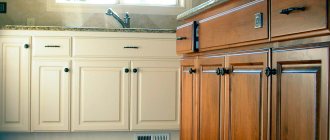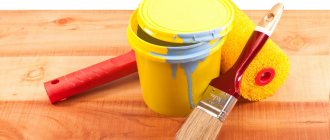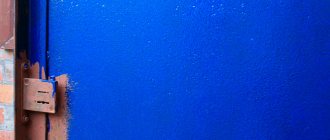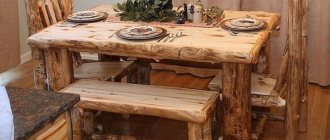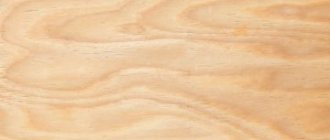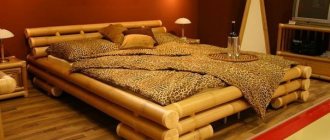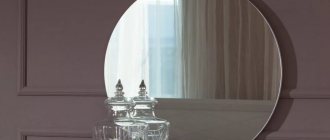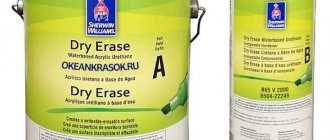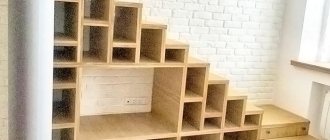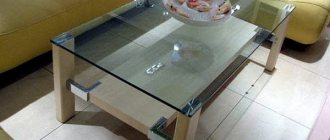Is it possible to update old furniture made from chipboard? Definitely yes! If you do everything correctly and use suitable paints and varnishes, painting laminated surfaces will not cause any difficulties. And you can easily turn old furniture into new.
First of all, the secret of painting laminate flooring lies in the fact that it is necessary to ensure good adhesion of the paint to the laminated surface. For this purpose, special primers . More information about the different types of primers can be found in the material: “Primer before painting various surfaces. What and why? .
The second important condition is to obtain a smooth and beautiful surface.
The third point is the creation of the necessary wear resistance and durability of the paint layer. It is also important that the furniture coating is as harmless as possible.
This applies not only to furniture, but also to doors, window frames, and interior decoration elements. enamels from Sherwin-Williams will help you successfully solve this entire set of problems
What paint can you paint laminated chipboard furniture with your own hands?
Inexpensive shelving and cabinets made of laminated chipboard and MDF were conceived as items that can be easily replaced with analogues of a different size, shape and color. But now home craftsmen can easily repaint such furniture - and share their experience on repair forums. We have collected the most common recommendations for updating color, carefully checked them, and are now ready to tell you: paint boldly, you will succeed!
All dirt must be washed off the surface of laminated furniture and degreased.
Use grease-dissolving detergents, rinse and wipe the laminate flooring thoroughly, and dry it with a cloth. Many home craftsmen recommend disassembling furniture. But here it all depends on the complexity of painting - if there are a lot of drawers and trim in a rack or cabinet, then, of course, it’s better to take it apart. If the shape of the furniture is very simple, and you want to paint, for example, only the facades, you can leave the cabinet “as is.”
2. Create a rough surface
The coating on modern laminated chipboard and MDF is made of PVC, and therefore, like any plastic, it is poorly wetted even with water, not to mention paint. For better adhesion (adhesion of the paint layer to the laminate layer), you need to treat the surface with the finest sandpaper (“zero”). It is best to work in a respirator - dust from the laminate layer is very harmful.
3. Primer is the main character
To ensure that the paint lays evenly, without rolling, and does not bubble in the near future, be sure to prime the surface of the furniture. What paint can be used to paint wooden furniture? Look for a primer that sticks to everything - even glass and tiles: almost all manufacturers of modern paints and varnishes already produce such primers (usually they are polyurethane-based).
The cost of such a primer is quite high, but you should not skimp on it - its quality may be even more important than the quality of the paint.
Motorists share a secret: you can use a primer for bumpers from a can. What paints should I use to paint IKEA furniture A respirator wouldn't hurt here either. In any case, the primer layer must be dried.
And it’s good if you allocate at least 12 hours for this.
Important: at this stage of the work, carefully seal all un-removed fittings with masking tape!
4. Seal cracks
The item is optional, but many of those who have successfully repainted chipboard furniture regret that they did not use putty before painting. There are two recommended ways to fill dents and scratches: either using latex putty or using epoxy-based compounds (there are even tips for using gelcoat).
In any case, after puttying, it is necessary to prime and dry the surfaces again.
5. Paint: which one to choose and how to apply it
Alkyd enamels and polyurethane paints are suitable for repainting over PVC film - it is best to buy a special paint and varnish material marked “for furniture” so as not to disturb the overall ecology of the apartment. Epoxy enamels usually give good results, but take too long to dry and retain an odor. There are many reports about home repainting of MDF and laminated chipboard with acrylic latex compounds - provided that a special primer is used (sometimes even in two layers).
For painting work, craftsmen recommend a velor rather than a small foam roller - it will paint the surface evenly, neatly, without unnecessary air bubbles. If you decide to paint your shelves or fronts in two layers, let the first layer dry completely.
Treat corners and hard-to-reach nooks and crannies with a brush with a beveled edge.
A professional approach is painting using a spray gun with paint consumption from 60 to 200 grams per square meter. The nozzle diameter and pressure will have to be calculated independently, taking into account the type of paint.
6. Varnish finish
If you have repainted the fronts of a wardrobe or kitchen cabinet - that is, furniture parts that are subject to a lot of wear and tear - it makes sense to coat the painted surface with a water-based varnish. It will protect the paint from external influences, scratches and abrasion. True, there is a danger that the varnish will turn yellow over the years - but you already know how to repaint your furniture again!
Many people ask the question “ How to paint laminated furniture?” ” and is it even possible to do this? After all, it often happens that you don’t want to part with comfortable cabinets and shelves, even though they have lost their appearance and do not fit into the interior after renovation.
Interior items often lose their appearance over time. Do-it-yourself decorative painting of walls with water-based paint? What to do if they are still strong and you don’t want to throw them in the trash? There is a good solution - to paint the outdated model with your own hands. Work on updating the facade can be carried out at home.
You can choose to cover it with paint or varnish, and also decorate the sample using scrap materials.
Modern interior items very quickly go out of fashion or lose their attractiveness, but purchasing new ones is not always possible. This raises the question: how to repaint chipboard furniture with your own hands so that the product acquires an attractive appearance? This is not always easy to do, because the result is influenced not only by the correct choice of materials and technology, but also by the accuracy of the process.
When planning to update the appearance of a room, owners may doubt whether it is possible to paint chipboard furniture. The uncertainty is understandable, but unjustified. You can make your products more modern with your own hands, you just need to repaint them with diligence and skill.
Sometimes it’s not necessary to throw out your old closet. If the owner has taste, then the item can be given a new life. And what satisfaction comes from furniture restored with your own hands! For it to truly become a source of pride, you should carefully study how to paint chipboard furniture at home. This knowledge will help you inexpensively refresh the appearance of a table, bedside table, living room wall, bed, chest of drawers or stool.
The tips in this article are universal for any objects made of particleboard.
How can you prime fiberboard?
Priming for oil and alkyd paints:
- The most inexpensive and effective primer option for fiberboard is natural drying oil;
- It penetrates deeply into the thickness of the material and reliably protects it from moisture;
- The impregnated surface has good adhesion to oil paints and alkyd enamels;
Interesting materials:
How can I make notifications appear on the screen? How to make the apartment warm? How can I make some pages in Word landscape? How to make the fan cool? How to prevent things from fading? How to prevent Windows 10 from updating drivers? How to prevent Windows 10 from updating? How to make calls from a tablet? How to make a hyphen on the keyboard? How to make a hyphen?
Painting chipboard. Tools, materials and technology
Chipboards are used for interior decoration and furniture making. The composite material is produced using the technology of pressing shavings of deciduous and coniferous trees with the addition of synthetic resin. At the end of the technological cycle, thick sheets with a loose structure and a rough surface are obtained. To prevent moisture from penetrating into the pores and destroying the canvas, it is laminated or covered with melamine film at the furniture production plant. For finishing, polished slabs are sold without additional protection, requiring painting.
Features of painting chipboard at home
Emulsions and varnishes increase the material's resistance to mechanical damage. At the same time, they enhance the moisture-protective and performance properties, prevent deformation and warping of the canvas. Before starting the process, prepare the tools. To work you will need:
- Solvent for degreasing (white alcohol or degreasing compound).
- Cotton rags.
- Covering film.
- Sandpaper of different grits.
- Roller or spray gun, for manual painting - brushes of different thicknesses.
- Putty and primer.
- Regular or spray paint, acrylic varnish.
- Putty knife.
Modern emulsions and varnishes are non-toxic, but do not neglect a respirator and gloves, and work in a well-ventilated area.
How to prepare chipboard walls and furniture for painting
Due to their porosity, the sheets quickly absorb the emulsion, so the surfaces must be prepared in advance before applying the decorative layer. The fittings are removed from the facades; when decorating the walls and floors, the adjacent areas are covered with film or paper. The process consists of 4 stages:
- eliminating minor defects;
- cleansing from dirt;
- surface leveling;
- applying the final decorative coating.
If the task is to refresh old furniture or floors, the remaining swollen paint is removed with a grinding machine or manually. When chemically washing, surfaces are treated with special solutions. Then use a construction hairdryer to soften the cracked layer and remove it with a scraper.
A hair dryer is one of the most effective tools for removing paint from walls, wood and other surfaces.
If the coating does not peel off, but has only lost its aesthetics, it is cleaned with low-abrasive sandpaper to make it smooth. The next step involves removing dirt with warm water and detergent with a napkin and drying thoroughly.
Chipboard putty
If there are chips and deep cracks at home, take shavings, mix them with glue and repair the unevenness. Then use corrective putty to level the surface. Construction stores sell ready-made wood putties based on:
Many people make their own plastic paste by mixing chalk powder with acrylic varnish diluted in water. Then, using a roller or brush, spread a thin layer over the facade, floor or wall. After 2-8 hours, the surface layer is cleaned with fine abrasive paper.
Chipboard primer
To prevent paint absorption, the slabs are coated with a special impregnation. Primer applied in one layer:
- creates a waterproof film;
- protects the material from the harmful effects of moisture;
- the appearance of mold spores;
- reduces paint consumption.
For old chipboard furniture and previously painted surfaces, an oil primer is more suitable. To create a base for painting, the sheets are treated with acrylic, alkyd, epoxy or polyurethane composition. Unlike analogues, which are designed for repeated processing, alkyd is applied in one layer. Easy to use aerosol acrylic primer. After drying, the canvas is degreased with white alcohol or acetone, and decoration begins.
More convenient, but at the same time much more expensive, in terms of volume, is an aerosol primer (500 ml, about 150 rubles). Justified only for small volumes of work.
Features of painting furniture made of chipboard
Working with laminated chipboard has its own peculiarities. Factory-treated facades do not require additional decoration, however, if used for a long time, they require restoration. Paint on a polymerized surface with a membrane-vacuum film does not always lie smoothly. First, it is sanded, then a composition with colored pigment is distributed over the panels.
How to paint chipboard
The quality of the decorative coating determines the type of enamel. Today, acrylic, latex, and alkyd compositions, presented in a wide color palette, are in demand. Imitations of metallic, mother-of-pearl, and precious metals allow you to uniquely decorate interiors in any style.
Latex ones differ in color saturation. However, when applied in multiple layers to chipboards, they may peel off spontaneously. Moreover, they do not protect against the appearance of pathogenic microorganisms, which is why they are not suitable for use in rooms with high humidity.
Alkyd enamels are free from this drawback. Designed for covering furniture in the kitchen and bath, application to floors and wall panels. However, due to the toxic solvent in the formula, their use is not recommended.
Water-based acrylic paints are environmentally friendly, dry quickly, create a dense waterproof and vapor-proof layer, and do not fade under the sun. The composition is prepared using adapted technology in 2 stages:
- fine powder is mixed with water in the proportion specified by the manufacturer;
- the mass is allowed to swell;
- mix until homogeneous.
Then pour into a spray gun or into a tray for application with a roller.
How to paint chipboard
A tool with a velor or foam nozzle is suitable for creating a smooth surface, and one with a long pile is suitable for creating a textured pattern. The ends and hard-to-reach places are treated with a thin brush. The composition with pigment is applied in one direction with quick movements without additional coverage of stains that appear after absorption. The next layer is applied a day later with a more viscous composition. After drying, apply the finishing coat.
Having a spray gun does not guarantee quality paint. For a good result you need experience working with it. You can get by with cheap and familiar tools in the form of a roller and paint brushes.
How to work with aerosol paints
Acrylic composition in a spray can is suitable for home painting. It is shaken vigorously for 30 seconds, then sprayed from a distance of 25 cm. To prevent smudges, the cabinet fronts are placed on the floor, the walls are painted from top to bottom. To ensure even application and obtain a sealing layer, the process is repeated 2-3 times, waiting for the previous one to harden (30 minutes). Attention is focused on processing the ends and joints. For additional protection against abrasion and damage, and to give a glossy or matte shine, varnish is applied. Experts recommend using a foam sponge and applying the product using pressing movements.
Selection of composition and application method
What to consider when choosing
- Resistance of the material to dampness - splashes and steam can destroy even a very strong base if its internal voids are open. The structure is destroyed when water is absorbed, the coating expands and cracks. During drying, the fibers and pores shrink, creating deformations that lead to peeling of the finish.
- Resistance to high temperatures - proximity to a hob, oven, or other equipment causes deformation of the top layer and base. Polymer particles do not withstand heat well and begin to melt at temperatures up to 100 degrees. A stream of hot water is enough to render them unusable.
- Resistance to aggressive environments - detergents, powders, acetic acid and substances containing alcohol react with many materials, corroding them and leaving marks on them.
- Durability - Wet rooms are used more heavily than living rooms. Doors and drawers wear out quickly. The coating wears off or receives mechanical damage - dents, chips, scratches. It must have high wear resistance.
- Adhesion - the composition is often selected depending on whether it can be used to repaint glossy kitchen facades. The smoother they are, the better they shine, and the less pronounced the relief on which the enamel can “catch.” Chipboard panels, unlike solid wood, do not have open pores and natural irregularities. They are not able to absorb the solution. As a result, it peels off quickly.
- Environmentally friendly - it is not allowed to use solvents and additives that can be harmful to health. They should not emit harmful substances not only under normal conditions, but also at high humidity and temperatures above room temperature.
- Resistance to ultraviolet rays. Low quality products quickly fade in the sun.
Instagram @nastavetrova
Instagram @nastavetrova
Types of compositions
- Acrylic - they are quickly erased and destroyed under the influence of vinegar and acids contained in products. Acrylic solutions do not tolerate dampness and heat well. If handled with care, they will last a long time if there is no sink or stove nearby. They have a wide palette. Non-toxic. Aerosols and mixtures are available for application by brush and roller.
- Oil-based, alkyd enamel - they are toxic and not intended for areas where food is prepared. Drying oils and varnish create an unpleasant odor even at room temperature. They are a fire hazard. Their performance is worse than that of their analogues. They don't hold up well and take a long time to dry.
- Water-based - easily washed off with water.
- Auto enamel - well suited for damp rooms with constant temperature and humidity changes. Does not fade and withstands loads well. The aerosol strengthens the structure and protects it from destruction, making the surface more elastic. Available only in cans. Colors can be mixed to create new shades.
Only auto enamels are well suited for treating all areas, including problem areas. Acrylic should not be used near the sink or stove. But, if you need to treat parts of the headset that are in a safe environment, it is better to use a spray can.
Methods for laying mortar
There are only two methods - manual and mechanical. In the first case, a roller and brush are used, in the second, a spray bottle or spray can.
It is more convenient to repaint furniture mechanically. The aerosol applies better and does not leave streaks. There is no need to waste time searching for solvents and the required proportions when preparing.
Pre-treatment of surfaces
Before painting, laminated surfaces must be prepared so that the paint lays evenly and adheres firmly.
You will need:
- dishwashing liquid;
- sponge;
- roller, brush;
- primer tray;
- rubber spatula;
- putty;
- a set of sandpaper;
- Sander;
- rags;
- gloves, protective mask and goggles.
The final result will depend on how well the surfaces are prepared.
Advice! If the product consists of many parts (a table with drawers, for example), then it is recommended to disassemble it before painting. Furniture of simple shapes - a wardrobe - can not be disassembled if you only need to refresh the facade by painting it white.
Sanding
The next step is to sand the surfaces. After sanding, the coating will acquire a rough structure, and it will be easier to paint and the paint will adhere better. Start with coarse-grained sandpaper and finish with fine-grained sandpaper. You can get the job done faster by using a grinder.
If you use a sander, it is important not to overdo it and sand evenly over the entire surface, otherwise you may end up with a wavy surface with different sanding depths.
Important! During work, the respiratory tract must be protected with a protective mask: the substances contained in laminated chipboard can be harmful.
Degreasing
All surfaces that are planned to be painted are thoroughly washed, removing dust and dirt. Then degrease using a sponge with dishwashing detergent applied to it, rinse off and wipe the treated surfaces with a clean, dry cloth or napkin.
Leveling surfaces
If the furniture has chips, cracks or other imperfections, they should be repaired at this stage before painting. It is best to fill all the recesses with latex-based putty or special products with epoxy resin. When the mass hardens, the surface is leveled with sandpaper.
After this, the product is primed again and dried thoroughly.
Padding
It is much easier to paint surfaces treated with a primer: the paint goes on smoothly and no air bubbles form.
It is advisable to purchase a primer that is suitable for smooth surfaces (tiles, glass). You can also use bumper priming compounds - they come in cans, making application more convenient and quicker. While working, you must wear a protective mask.
After applying the primer layer, you need to let it dry. This process can take about 12 hours; you can find out more precisely by studying the label of a particular product.
Decor elements
Often objects made from chipboard are refreshed through decoration. Drawings, ornaments, contrasting inserts, parts of the facade made of fabric or wallpaper - just a small list of ideas for giving a piece of furniture a new look. Other suitable materials include decoupage napkins in Provencal or Victorian style, straws, artificial glass, colored paper, newspaper (magazine) clippings and much more.
The combination of the main color of the facade and the insert or print should be harmonious.
You can enliven the coating with the help of contrasting colors, skillfully selected to match the overall style of the room. Brown tones (all shades of natural wood), yellow and blue, red and green go well together.
You can decorate an old cabinet not only with simple painting, but also with painting. If you know how to draw, this is one of the chances to put your talent into practice and show your imagination.
The facade can be given a vintage look by applying patina or special craquelure varnish. You can choose unusual fittings that make the cabinet more interesting and create the look of noble antiquity.
The craquelure method creates an antique effect.
An alternative to painting is to cover furniture with self-adhesive film. You can find a suitable shade (possibly with a pattern) in any hardware store.
Updated items often become stylish pieces of furniture.
An exclusive look will serve to reconsider the attitude towards a used item as obsolete. Don't rush to send it to the landfill. See what you can do with a cabinet, table or cabinet. Then you won't have to spend your budget on expensive furnishings.
You can combine different styles and not be afraid to experiment.
Paint selection
Furniture with a laminated facade is best painted with water-based acrylic paint. It is suitable for painting products white, and to add color to the base you can add a color of the desired shade. Also, if necessary, the paint can be diluted with water to achieve a lighter tone.
Acrylic paint can be used indoors: it does not have a pungent odor, does not emit harmful compounds, is durable and easy to clean. To paint large surfaces, you can use acrylic paint in cans.
Thixotropic paint is also suitable for painting furniture - it has a special consistency, thanks to which it applies smoothly, without running down or forming smudges. Painted surfaces will resemble plastic ones.
You can paint laminated surfaces with polyurethane and latex paints, but when choosing, it is important to pay attention to the label: it should indicate that the product can be used for indoor furniture. They are also available in a basic white color; color is used to obtain the desired shade.
High-quality painting of interior doors: tips from a painter
Every theater begins with a hanger, and the interior of any room begins with a door, which sets the mood and makes a significant contribution to the atmosphere of the interior and is an important element of the zoning of the room.
Many people who have started renovations underestimate the need to update interior doors, focusing on the choice of wallpaper, flooring and furniture. As a result, an unpleasant contrast is created between a brand new room and an old door that has lost its appearance
But this can be avoided if you paint the interior doors yourself. Provided that the paint is selected correctly and the painting technology is followed, the result will be excellent, which will allow you to create a complete, harmonious interior and at the same time significantly save money.
Coloring
To paint old furniture, you should prepare:
- paint container;
- roller, brush;
- paint;
- masking tape;
- gloves, mask.
Hardware protection
Before starting work, it is worth removing all fittings from the furniture. If this is not possible, all elements are carefully sealed with masking tape to protect them from accidental paint.
Roller and brush painting
In order to paint laminated surfaces, it is best to use a velor roller rather than a foam roller - it applies the paint evenly, preventing the formation of air bubbles. Foam rubber, due to its porous structure, can leave noticeable marks on the surface.
For hard-to-reach places and corners, use a narrow brush with a beveled edge. The tool must be of high quality, with tightly secured lint. If you paint with an old brush, individual hairs may fall out, remaining in the applied layer of paint.
If you plan to paint chipboard furniture white or light colors, it is advisable to apply two layers of paint so that the coating is dense. It is necessary to take a break between applying the first and second layers to allow the paint to dry completely.
Using a spray gun
An easier and faster way is to paint furniture using a spray gun. In this case, 60–200 g of paint will be spent on each m², depending on its consistency, layer thickness and other factors.
How to fix minor defects
To restore and repaint old furniture, it must first be disassembled. The more individual elements you have, the easier it is to work on particularly hard-to-reach areas.
If you are going to paint furniture yourself for the first time, then paint with a roller rather than a brush, so you can cover the desired area more evenly.
All damage and dents are puttied and cleaned. You can apply an additional layer of antiseptic to prevent the formation of mold and mildew. If you do not plan to paint the product, but only varnish it, buy transparent putty. It will not stand out against the background of the entire wooden surface. To correct defects, work in thin layers, which must dry well.
It is better to apply putty several times than to create a dense layer that will take a long time to dry and possibly become deformed during the painting process.
Finish coating
Laminated chipboard has a smooth surface, but after sanding and applying paint it becomes matte. You can restore the shine of furniture and additionally protect painted surfaces by covering them with water-based varnish.
After the varnish has dried, the surface can be polished with a mildly abrasive auto polish, because it is almost impossible to apply the varnish with a brush or roller in an even layer and there will be small or noticeable waves on the surface; after polishing, the surface will be perfectly smooth and glossy.
Advice! It is recommended to purchase products for pre-treatment, coloring and finishing from the same company: they can definitely be used together, and the compositions of products from different manufacturers may be incompatible with each other.
Painting furniture yourself is quite simple: if you follow these recommendations, the new coating will be perfectly smooth, and the result will last for many years.
Interesting to know!
Dipped furniture is a popular home design trend that works well with kitchen tables and chairs. To try it out, paint the bottom half of your table legs. Or try the opposite: paint most of the table, but let the wood show through on the bottom half of the legs. A dipped look is a great way to introduce strong color. If you want to get really creative, consider using chalk paint on the top of your table. Children, for example, will draw while you prepare their breakfast, and adults will also have the pleasure of writing messages or reminders.
Master class No. 1. Stencil painting
Everything is mixed in this closet - romanticism, Chinese motifs, and even something from Gzhel. Everyone sees something different in him. Let's learn painting techniques.
Materials and tools
- Prepared cabinet;
- white paint;
- solvent;
- blue spray paint;
- gold paint;
- stencil;
- brushes
Step by step guide
Step 1.
- We remove all fittings, locks, handles, etc. from the cabinet. Using familiar technology, we will prepare a wooden cabinet for painting.
- We spread newspapers or a large piece of polyethylene on the work surface (on the floor) so as not to damage other furniture.
Step 2.
- We take white enamel and solvent. In a small plastic jar, dilute paint and solvent according to the instructions on the paint can.
- The paint consumption is also written on the can; it is better to use this information and immediately dilute the required amount. If you mix too little paint, you may end up with a different color the second time.
- We make the background of the picture - apply the first layer of paint . Leave until completely dry.
Step 3.
- If the color turns out saturated and you like it, then take a stencil and apply it to the cabinet . Carefully glue on the front side and side walls so that there are no bubbles.
- Shake the spray paint well and spray it over the stencil . For an even color, one layer of blue paint will be enough, so we do everything the first time.
Step 4.
While the blue paint dries, paint the hardware removed from the cabinet in gold leaf. After the parts have dried, screw them into place.
We remove the stencil from the cabinet and place it in the most visible place in the room - after all, it now deserves special attention!
You can decorate the closet with a stencil, for example, with flowers.
